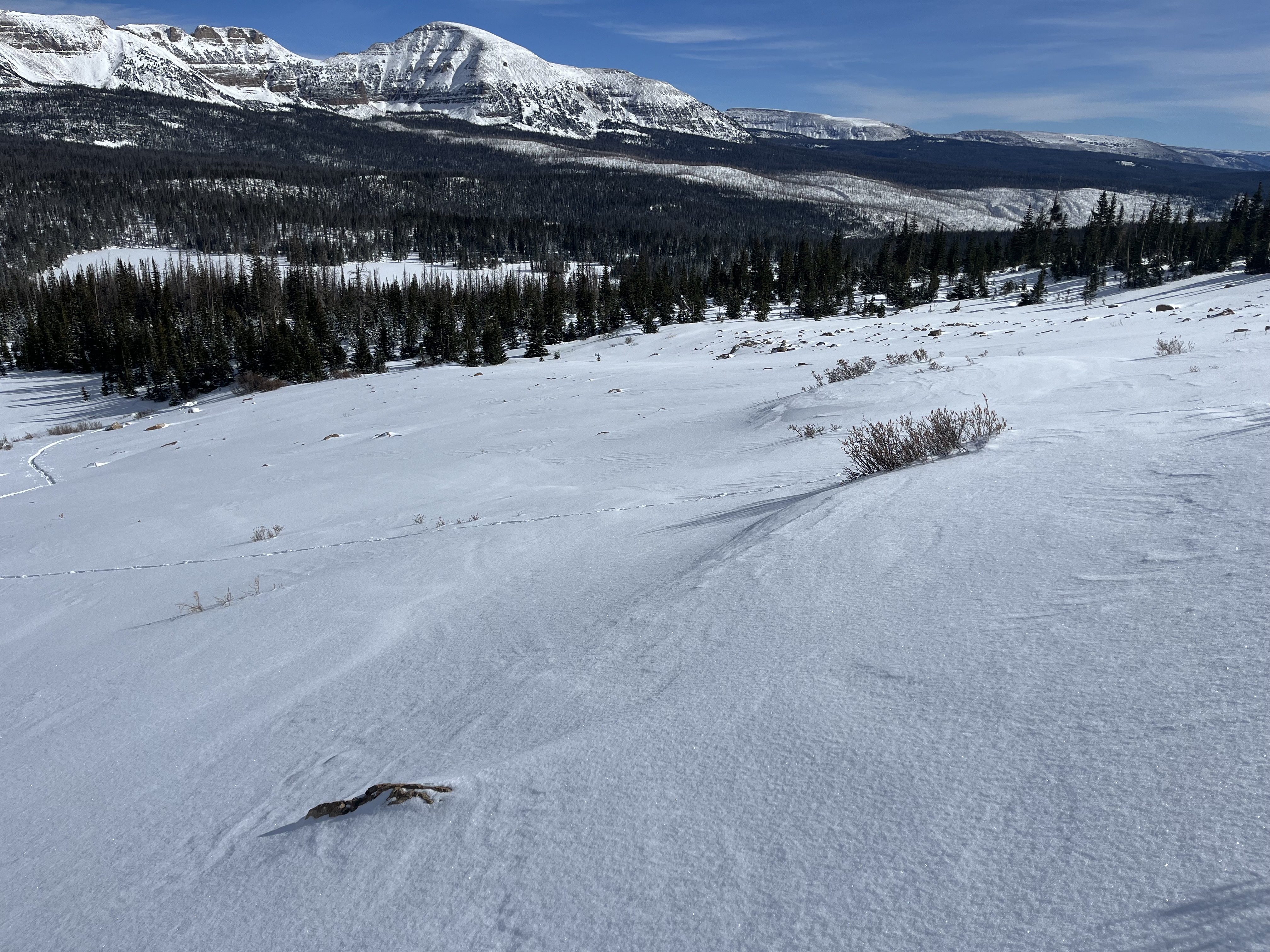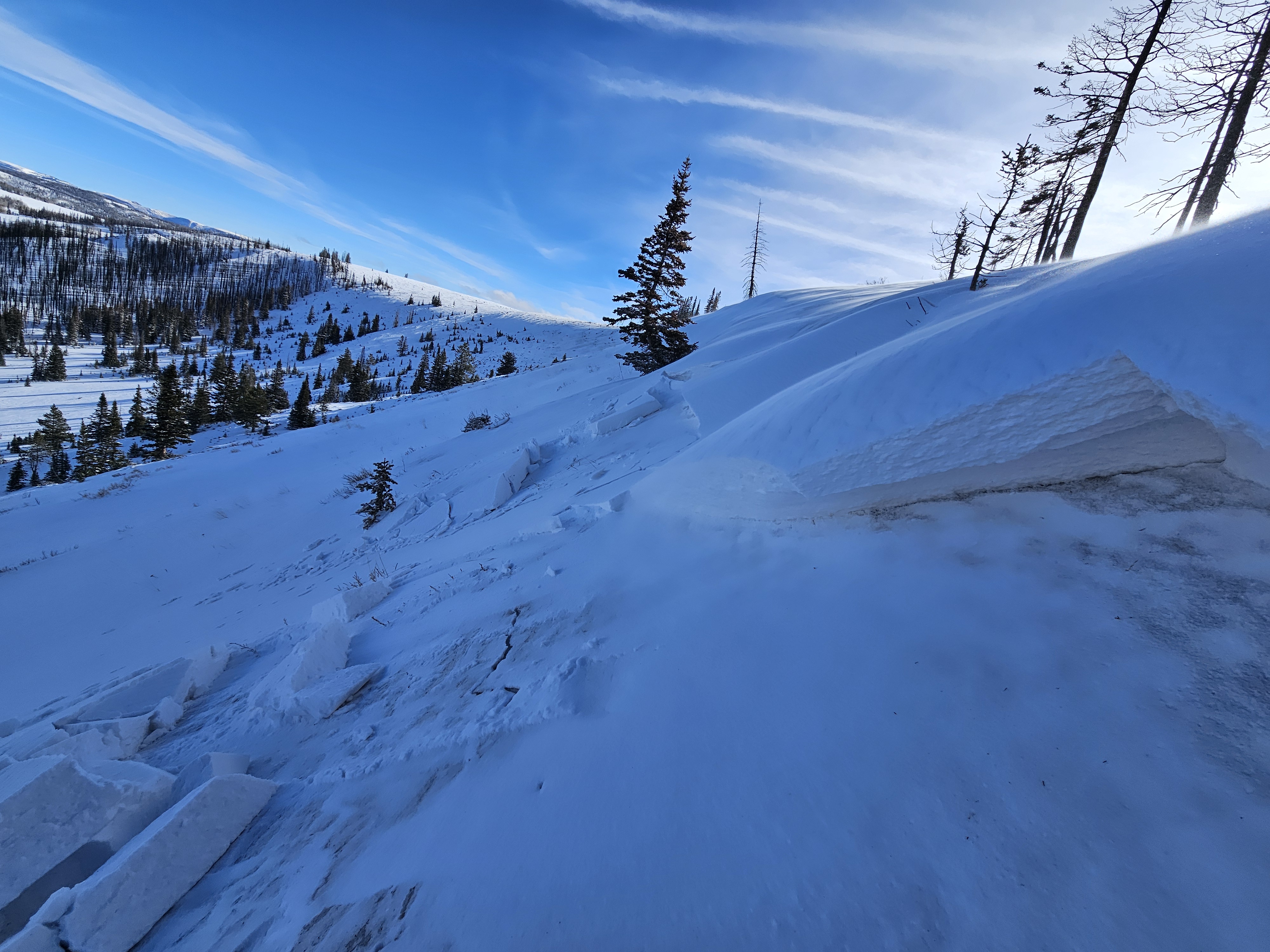Save the Date -- Saturday, December 7
| 17th Annual Utah Snow and Avalanche Workshop (USAW) | Information and tickets are available
here.
Nowcast
The storm arrived overnight, delivering 2-3” of medium-density snow across the range. Trailhead temperatures hover just under 30 ℉ at 5:00 AM at 7,500’ and closer to 20℉ at 10,000’, and may feel much colder with wind chill. Moderate winds are blowing from the south-southwest around 25 mph and gusting into the 40’s.
Forecast
This storm may not be a major event, but it's a solid start to the season for the Uintas. Expect winds to shift westward in the early morning hours, with gusts reaching 40 mph, enhancing snowfall intensity. Anticipate consistent snow, wind, and moisture throughout the day, with up to 1' of higher-density snow likely accumulating in the region. Daytime high temperatures will remain steady before dropping into the teens overnight as cold air moves into the area.
Futurecast
While it's disappointing that the storm appears short-lived and may shift south of our area, the southern portions of the range, such as the Wolf Creek and Current Creek zones, are still expected to receive respectable snowfall totals, with just over a foot likely. Snow showers may persist into Wednesday morning before the system moves out of the area.
Snowpack and Travel
I worked my way around Wolf Creek Pass on Sunday to gather information on snow surfaces, snow depths, and overall structure prior to this active weather pattern. Generally, the snow structure is weak and consists of faceted and decomposing snow. On slopes that see the sun you may find a crust that breaks things up, while at the same time providing support to keep us off the ground for turning and traveling. Ted was on the north half of the range near Mirror Lake yesterday and saw similar structure and noted “The snowpack is still shallow and is mostly sugary, faceted snow that does not have a lot of base to it.”

He also mentioned, “The winds have created some stiff wind slabs that would easily break as you traveled over them and these are resting on weak, faceted, old snow.” This affirms what I saw Sunday on my travels in the south half of the range.













